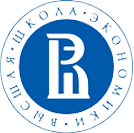International organisations, public and civil society entities often refer to these statistics in their documents and speeches; however, the audience does not necessarily put into question the credibility of the data.
Consequently, the authors of the report decided to analyse the whole process of obtaining the most widespread statistics related to corruption, dividing them into the following categories in accordance with their credibility grade:
- “credible”, if the statistic employs a transparent and plausible estimation method and the data can be considered as reliable;
- “problematic”, if there are flaws in the data (for instance, if they are based on a non-representative sample) or their analysis methods pose problems (for example, the conclusions are based on unjustified extrapolations);
- “unfounded”, if an original source for the statistic cannot be located, the statistic in question is based on a mischaracterisation of the original source or the latter is an unsubstantiated guess.
The U4 experts stress that of the ten corruption statistics they assessed, not a single one could be classified as credible, and only two came close to credibility; as a consequence, six of the ten statistics are problematic, and the other four are estimated by the authors as entirely unfounded.
1. “Approximately US $1 trillion in bribes is paid worldwide every year” - problematic
This frequently cited phrase is attributed to the World Bank and derives from an analysis performed in the mid-2000s by Daniel Kaufmann, then director of global programmes at the World Bank Institute.
In their survey, Kaufmann and his team relied on data from a 2000 World Bank Enterprise Survey (WBES), and the World Economic Forum’s 2004 Executive Opinion Survey. They also drew on separate household surveys conducted by the World Bank between 1999 and 2003.
This survey data were insufficient to generate a global estimate of annual bribe payments, therefore the research team extrapolated results from the survey. However, the U4 experts underline that the extrapolation method was not entirely transparent and was often based on allegedly wrong assumptions for many countries, whereas the full description of the method and the specific calculations have never been made public. Moreover, by 2021, the data gathered by Kaufmann have become largely outdated and it is likely that they do not adequately reflect the current situation.
At the same time, it should be highlighted that the survey did not provide an unequivocal figure of $1 trillion, but rather a range of estimates from US$604 billion to US$1.76 trillion without indicating that the exact midpoint is US$1 trillion.
2. “Approximately US$2.6 trillion in public funds is stolen/embezzled each year” – unfounded
The respective figure was cited for the first time by UN Secretary-General António Guterres in 2018 without a reference to the source, but a UN document lists a 2008 joint statement by a coalition of civil society organisations as the authority for this statistic. The civil society coalition’s joint statement, however, purports to provide an estimate of the overall annual cost of corruption, rather than an estimate of the annual amount stolen or embezzled.
In fact, Guterres’s speechwriter misunderstood what that figure was supposed to estimate, but it was subsequently cited as authoritative by other organisations.
3. “Corruption costs the global economy approximately US$2.6 trillion, or 5% of global GDP, each year” – unfounded
The earliest mention of this claim appears in a 2008 publication, entitled Clean Business Is Good Business, by a coalition of organisations including the International Chamber of Commerce, Transparency International and the World Economic Forum.
The publication referred to the World Bank, but no specific source was cited. The original source may be the above-mentioned estimates produced by Kaufmann, however, his paper did not include any discussion of an attempt to estimate the annual cost of corruption. In addition, since 2006 5 percent the global GDP has never reached $2.6 trillion.
4. “Corruption, together with tax evasion and illicit financial flows, costs developing countries approximately US$1.26 trillion per year” – problematic
This statistic appeared for the first time in the 2011 Global Financial Integrity (GFI) report Illicit Financial Flows from Developing Countries over the Decade Ending 2009, which was based on GFI’s estimate of illicit financial flows in 2008. The U4 experts stress that the credibility of this statistic raises doubts for a number of reasons.
Firstly, GFI’s method for estimating illicit financial flows uses discrepancies in official trade and macroeconomic statistics to detect hidden financial flows, which has been subject to criticisms.
Secondly, the 2008 figure was on the high end for the years that the report examined. Similar surveys were conducted later and it seems inappropriate to rely on the outdated statistic.
Thirdly, GFI purports to estimate illicit financial flows from all sources, not just from corruption whereas the organisations citing GFI’s report mention only corruption crimes in their statements.
5. “Approximately 10%–25% government procurement spending is lost to corruption each year” – problematic
The organisations that use these data refer in the first place to the following documents:
- Transparency International’s 2006 Handbook for Curbing Corruption in Public Procurement;
- UNODC’s 2013 Guidebook on Anti-Corruption in Public Procurement and the Management of Public Finances;
- OECD 2013 Guide, Implementing the OECD Principles for Integrity in Public Procurement.
However, none of them refers to other sources for the original calculations. With respect to the OECD guide, the U4 experts found out that the estimate was based on the 2006 TI handbook, as well as national estimates cited by select OECD member countries in an expert group on integrity and public procurement, while the TI handbook was a “summary” of estimates presented in various case studies, surveys, and publications, as well as publicly available data on bribery convictions.
After conducting their own review, the U4 experts have identified, as potentially relevant publications, two World Bank working papers by Charles Kenny, from 2006 and 2007, and the aforementioned survey by Kaufmann that estimate total bribe payments in procurement which is not the same as procurement spending. Additionally, the report highlights that there are a number of more focused studies, including audits of individual programmes in various countries that could be used to offer examples of the extent of procurement fraud in public procurement in some settings.
6. “Approximately 10%–30% of the value of publicly funded infrastructure is lost to corruption each year” – unfounded
Many of the organisations that cite this statistic rely, directly or indirectly, on an October 2012 press release from the Construction Sector Transparency Initiative (CoST). The statements from CoST have cited this statistic but have attributed it to TI’s 2005 Global Corruption Report. The latter, however, does not provide this statistic.
In addition to relying on the TI report, CoST drew on data from the OECD and the American Society of Civil Engineers (ASCE) as presented in a 2013 paper entitled Reducing Corruption in Infrastructure Sectors by John Hawkins and a 2015 IMF publication on public investment. However, the analysis of the publication showed that the conclusion that roughly 10%–30% of public construction spending was lost to corruption was not reflected in the paper and such data were provided only with regard to one country (Indonesia).
7. “Approximately 20%–40% of spending in the water sector is lost to corruption each year” – unfounded
The authors failed to identify the original source of this statistic: UNDP and the German Development Agency (GIZ) cite the Water Integrity Network’s (WIN) 2016 Water Integrity Global Outlook; this in turn references a World Bank estimate but does not cite a World Bank document and a 2006 publication from the Swedish Water House (SWH), which again references “estimates by the World Bank” without citing any specific dataset. Further attempts to trace these estimates to the source bring to the documents where this statistic in the context of financial losses due to corruption is either not provided or a guess.
8. “Up to 30% of development aid is lost to fraud and corruption each year” – problematic
This claim has been asserted by former UN Secretary-General Ban Ki-moon without citing a source in 2012. The original source for this statistic seems to be a 2005 book by Raymond Baker entitled Capitalism’s Achilles Heel, along with a 2003 policy report by Baker and Brionne Dawson. However, they did not purport to provide an estimate of the amount of development assistance stolen or the outcome of the UN Global Fund’s internal audits. However, if the Secretary-general did rely on the outcome of the audits, extrapolating from the fraud and corruption detected in this one programme to corruption-related losses in all development assistance seems controversial.
9. “Customs-related corruption costs World Customs Organization members at least US$2 billion per year” – problematic
TI cites the OECD as the source of this statistic, while UNCTAD cites the WTO. Both the OECD and the WTO appear to rely on a 2012 article by Bryane Michael, Frank Ferguson, and Alisher Karimov entitled Do Customs Trade Facilitation Programmes Help Reduce Customs-Related Corruption?However, while this article purports to use a combination of prior studies and statistical analysis to estimate the total government revenue losses attributable to corruption, prior studies described in the paper are opaque, according to the U4 experts, and there are serious questions about their validity.
10. “Approximately 1.6% of annual deaths of children under 5 years of age (over 140,000 deaths per year) are due in part to corruption” – problematic
The original source appears to be a 2011 academic article by Matthieu Hanf et al. entitled Corruption Kills: Estimating the Global Impact of Corruption on Children Deaths. The authors of the U4 report stress that the methodology employed in the research paper is quite transparent and the methods are in conformity with the objectives. However, there are some clear difficulties with the extrapolations due to a number of potentially important variables that they could not control, point estimates and the use of a cardinal scale, where the difference between a 1 and a 2 is the same as the difference between a 2 and a 3, and between a 3 and a 4, and so forth.
The authors of the article are appropriately cautious about how they present their estimates of the number of child deaths attributable to corruption, whereas the organisations that have cited the work have suggested a degree of certainty in this estimate.
Although the U4 experts consider this statistic as the one that they came closest to deeming credible, they label it as “problematic” and insist it should be cited with relevant reservations.
Having detected no unequivocally “credible” statistic, the U4 experts recommend taking into consideration the following when using these data:
1. Always trace back to (and, in written documents, cite and/or link to) the original source that should be easily located;
2. Read the original source carefully: as a minimum, verify that the statistic is actually based on quantitative analysis and confirm that the original source is estimating the same quantity that the statistic purports to measure;
3. Do not conflate an author’s institutional affiliation with the institution’s official findings: if the statistic is produced by an officer and does not constitute the official position of the organisation, this must be indicated when the data are cited;
4. Do not exaggerate certainty, precision, or generality of the statistic;
5. Avoid “decorative” statistics and focus instead on evidence of significant effects or associations: rather that citing unreliable descriptive global statistics it is better to focus on empirical evidence reflecting a causal relationship thereby shifting from a general description of a problem to the analysis of its causes and consequences.

